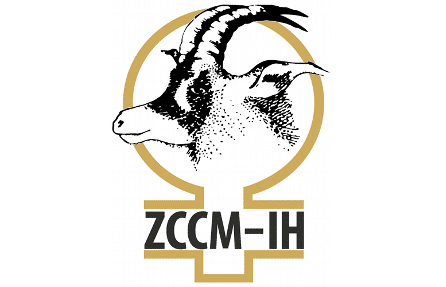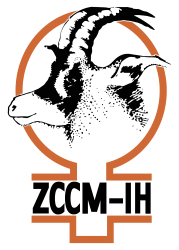
THE year-end always comes with hype as industries and other economic players get busy planning for the coming year.
The year 2021 had its ups and downs, but on balance the economy had a mixed performance despite the tough economic environment and challenges posed by coronavirus. At the start of the year, the country’s main foreign exchange earner, the mining industry, was seemingly in deep waters and fighting for survival. Global copper prices were on a downward trend, coupled with an unpredictable taxation regime and other challenges such as electricity supply with regard to Konkola Copper Mines (KCM). Many firms had put on hold various investment projects while others contemplated putting the mines on care and maintenance, a development that could have resulted in job losses. In trying to address these challenges, Government, through ZCCM Investment Holdings (IH), increased its shareholding in Mopani Copper Mines to 100 percent through a US$1.5 billion 10-year purchase agreement. “Government’s acquisition, through ZCCM-IH, had been completed and it is well placed to build on the investment undertaken by Glencore to position the mine as a leading Zambian copper producer. “Mopani Copper Mines Plc hereby confirms that Glencore has sold its majority stake in Mopani to ZCCM-IH following the conclusion of the shareholding discussions,” said Mopani public relations manager Nebert Mulenga at the time of the take over. In 2019, the Ministry of Energy had declared transmission lines owned by Copperbelt Energy Corporation (CEC) Plc as a common carrier following the non-renewal of the bulk supply agreement with Zesco Limited. Previously, CEC used to buy electricity from Zesco and supplied it to KCM, but the declaration of its infrastructure as a common carrier meant that Zesco will use the transmission lines to power KCM at a lower fee determined by the Energy Regulation Board. Given the foregoing, Zambia’s cumulative volume of refined copper exported from January to October 2021 reduced by 4.7 percent to 735, 200 metric tonnes (mt) compared to 771,600mt in 2020 for the same period. According to the latest Zambia Statistics Agency’s monthly statistical bulletin, copper production from January to October 2020 stood at 771,600mt and the country managed to produce 110,461mt to end the year with 882,061mt. The bulletin further stated that earnings from refined copper in October 2021 decreased by 0.1 percentage point to K11.753 billion from K11.764 billion in September this year. Nevertheless, the election of President Hakainde Hichilema and the United Party for National Development (UPND) brought optimism to the industry, with Zambia Chamber of Mines president Godfrey Beene saying the mines will unlock over US$2 billion worth of investments it held due to the alleged hostile relationship with the previous administration. “The mines are ready to raise funding for the projects, which they had held back since 2019 because of tax changes that deterred investment. The mining companies’ main request to the new government is that they be allowed to deduct mineral royalties from the tax they pay on profits,” Dr Beene said.
This request has since been accepted following Minister of Finance and National Planning Situmbeko Musokotwane’s announcement in the 2022 national budget that Government intends to attract investment and boost production in the mining sector through re-introducing the deductibility of mineral royalty for corporate income tax assessment purposes. Dr Musokotwane said Government intends to stimulate the mining industry to reach three million metric tonnes annual production in the next 10 years from the current 800,000mt. Until recently, prices of petroleum products remained unchanged from December 2019 because Government subsidised importation of the commodity due to challenges faced at Indeni Petroleum Refinery, which has since been placed on care and maintenance. It has been argued that buying fuel from Indeni, which is processed twice, at source and at the Ndola plant, is more expensive compared to importation of finished products.
However, importation of finished products is also not financially sustainable because Government used to spend US$67 million monthly to waive customs and excise duties for oil marketing companies (OMCs) engaged to import. In addressing challenges in the petroleum sub-sector, Government will restructure the fuel supply chain to achieve least cost pricing while ensuring stable supply of products. “The design of the existing petroleum supply lines were largely motivated by the geo-political strategic realities of the 1960s as Zambia sought to disengage from the economic connections with southern African countries and economic efficiency was considered secondary. “These inefficiencies still exist today. For example, fuel may come into Zambia from Dar es Salaam. Whether it comes in form of raw stuff for the Indeni Refinery or finished imported stuff, it travels all the way to the storage tanks in Ndola. Despite its fair share of challenges, the electricity sub-sector performed relatively well with load-shedding held under control although three national power black-outs occurred due to system failure. The electricity sub-sector reached its climax last July when former President Edgar Lungu commissioned the 750 megawatts (MW) Kafue Gorge Lower that ensured that Zambia will now have an installed capacity of 3,600MW against peak demand of 3,000MW.
However, owing to structural rigidities in the electricity sub-sector, tariffs are not cost-reflective, hence the low private sector investment. “To attract investment within the electricity sub-sector, we will implement cost-reflective tariffs. We will work with countries in the region to accelerate the integration of electricity infrastructure projects to improve access to regional power markets,” Dr Musokotwane said. On the capital markets, 2021 saw the markets rebound, especially in the fourth quarter, with the Lusaka All Share Index (LASI) growing by 35 percent year-on-year compared to 30 percent in the same period last year.
Securities and Exchange Commission (SEC) chief executive officer Philip Chitalu said with the appreciation of the Kwacha, the stock markets appear to be rebounding and the LASI showing a sharp increase. “Already, with increased demand and better profitability in listed companies, the stock prices have started to show an upward trajectory,” Mr Chitalu said. He also said SEC has received numerous inquiries from firms interested to list green bonds. During the year, SEC successfully admitted four firms on the sandbox, with two that are already live-testing their product offerings. Mr Chitalu named Lusaka Securities Exchange (LuSE), Kukula Capital, Lupiya Capital, and Premier Credit as the four entities piloting the sandbox platform.
Recently, Minister of Technology and Science Felix Mutati launched the live-testing phase of the sandbox platform. Some of the applications and products are game changers as they will provide capital to small and medium enterprises (SMEs), which suits in well with the aspirations of Government on the need for SMEs to access affordable finance. On the benefits of municipal bonds if Government considered that route, Mr Chitalu said local authorities should start thinking outside the box on financing service provision in their areas. On the agriculture front, significant progress on several fronts was recorded as evidenced by the 3.6 million metric tonnes maize bumper harvest. Notable progress was also made regarding production of wheat, soya beans, rice and other food commodities. Equally, the fisheries and livestock sub-sectors have also been making steady progress towards economic growth. Understandably so, agriculture presents the best opportunity to attain growth especially that the majority of people, about 60 percent, are dependent on it. This sector has a relatively short gestation period with low capital requirements, readily available labour, abundant water resources and arable land. For a long time, the sector has faced a number of structural and other impediments to the realisation of its full potential. These include low production and productivity, limited market access, under-developed value chains and dependence on rain-fed agriculture. In the recent past, the frequency and intensity of climate events has also negatively impacted the sector. But the sector has failed to live to its full potential due to the manner it is administered, especially when it comes to the Farmer Input Support Programme (FISP) and the strategic food reserves that consume a huge chunk of the ministerial budget at the expense of other programmes and activities such as extension services and research and development. In 2021, FISP was allocated K5.701 billion while next year its budget is K5.372 billion to support one million smallholder farmers. It is in this vein that Government intends to reform implementation of FISP, as the current format, delivered through a combination of the direct input support (DIS) and electronic voucher system (e-voucher), has a number of challenges. Dr Musokotwane said the DIS mode of delivering inputs is unsustainable to the treasury, with expenditures increasing significantly over the years but with limited change in the number of beneficiaries and input package. “It is also characterised by serious challenges in delivery as beneficiaries have received fewer inputs than what they have paid for. Similarly, in areas where the e-voucher system is being used, some farmers have not been receiving inputs despite making a contribution. Further, there has been no equity in terms of benefit between the two delivery modalities,” he said. Policy Monitoring and Research Centre (PMRC) executive director Bernadette Zulu cited poor infrastructure such as roads, especially in rural areas, as impediments to the growth of the sector. And Environment Communication Centre (ECC) board vice-chairperson Kagosi Mwamulowe said concerted efforts in averting climate change using effective soil management technologies are needed. “Improving soil fertility entails improving crop yields and food security for small-scale farmers,” Mr Mwamulowe said. Expressing similar sentiments, Zambia Alliance for Agro Ecology and Biodiversity (ZAAB) national coordinator Mutinta Nketani said organic fertiliser plants should be established countrywide using the public-private partnership (PPP) initiative. The use of technology like satellite in the sector will help decision-makers, agronomists, farmers and other stakeholders to make accurate predictions on crop yields and weather patterns. Ignotospace chairman, Siddhartha Parmar, said the company, which is promoting this concept, will use satellite and earth observation data to improve the economy through precision farming. Furthermore, cooperatives are being considered as platforms to show that farming is a business as opposed to only growing crops for home consumption. Ministry of Small and Medium Enterprises Development director of cooperatives Shadreck Mungalaba said cooperatives, once managed properly, are effective tools to empower citizens economically. In the advent of COVID-19, the information and communications technology (ICT) sector has proved to be vital in social and economic affairs of the country. With working from home and international meetings being held virtually, the ICT sector has enabled economic growth by facilitating delivery of services through the internet and mobile broadband. In view of this, Dr Musokotwane said, ICT is an important tool for innovation. He said financial inclusion is increasingly creating employment opportunities for youths in various sectors such as transport, trade and financial services.
Source: http://www.daily-mail.co.zm/economy-on-path-to-recovery/
